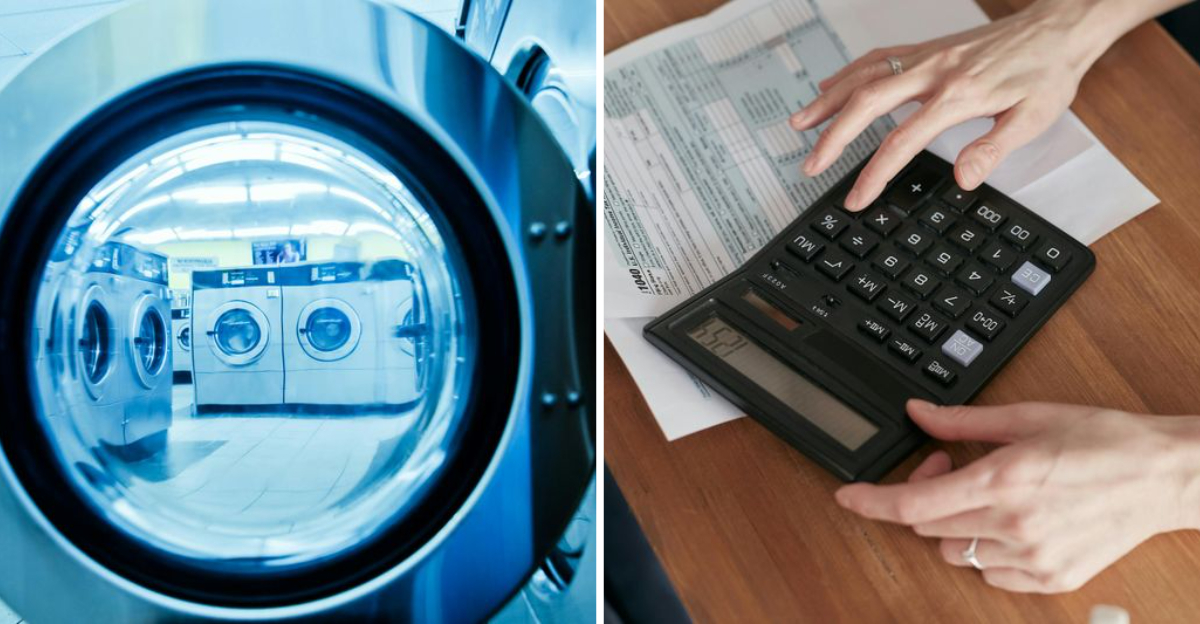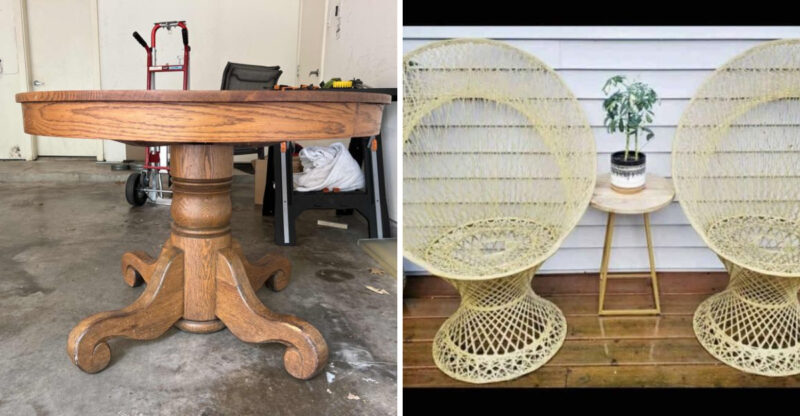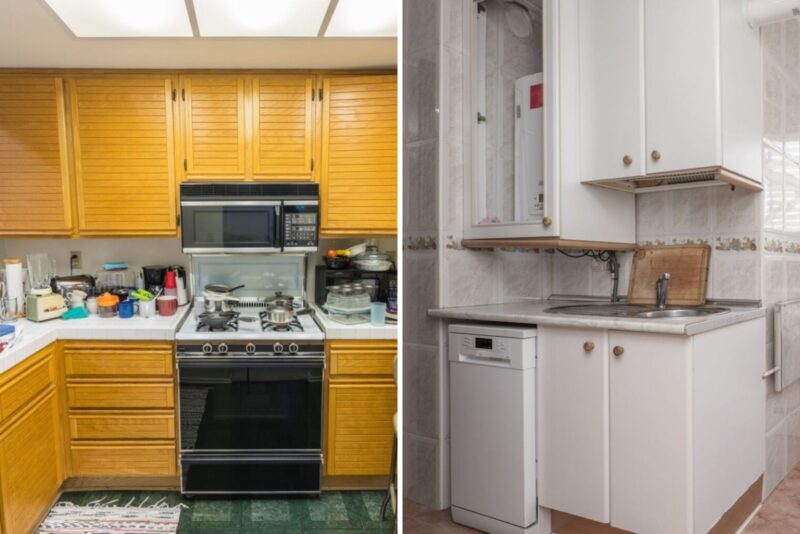12 Appliance Buying Tips That Might Just Save You From Costly Repairs Later

Buying a new appliance can be exciting, but choosing the wrong one could end up costing you hundreds or even thousands in repairs later.
Many homeowners make the mistake of focusing on looks or price tags instead of long-term reliability. To help you make smarter choices, I’ve gathered key tips from consumer experts and appliance technicians that can save you money and frustration down the line.
These general insights are based on industry trends and maintenance data, though results may vary depending on your household size, usage habits, and brand selection.
1. Research Brand Reliability Before You Shop
Did you know some brands have way better track records than others when it comes to lasting power? Spending just thirty minutes reading reviews and checking reliability ratings can save you from buying a lemon. Consumer reports and online forums are goldmines of real-world experiences from actual owners.
I always check multiple sources before making my final decision. One bad review might be a fluke, but if dozens of people mention the same problem, that’s a red flag you shouldn’t ignore.
Brands with solid reputations usually cost a bit more upfront. However, that extra investment often pays off because you won’t be calling repair technicians every few months or replacing the appliance years earlier than expected.
2. Check the Warranty Coverage Carefully
When you’re comparing models, the warranty tells you how much confidence the manufacturer has in their product. A longer warranty usually means the company believes their appliance will hold up well over time. I always read the fine print to see what’s actually covered and what isn’t.
Some warranties only cover specific parts or labor for a limited time. Others might require you to use authorized service centers, which could be inconvenient depending on where you live.
If the standard warranty seems short, ask about extended warranty options. Though they cost extra money, extended warranties can be worth it for expensive appliances like refrigerators or washing machines that you’ll use daily for years.
3. Look for Simple, Proven Technology
Fancy features might look cool in the showroom, but they often mean more things that can break down. Appliances with straightforward mechanical controls tend to outlast their high-tech counterparts because there are fewer complicated parts to malfunction.
I’ve learned this lesson the hard way after buying a washer with a touchscreen that stopped working within two years. The repair cost almost as much as a basic model would have cost originally.
Are all those extra bells and whistles really necessary for your daily needs? Sometimes the simplest option does the job just as well and will keep running reliably for many more years without expensive repairs or replacements.
4. Measure Your Space Twice Before Buying
It sounds basic, but improper fit causes more problems than you’d think. An appliance that’s too large might not allow proper ventilation, which leads to overheating and premature failure. One that’s too small might wobble or shift during operation, causing wear and tear on internal components.
I always measure height, width, and depth, then double-check those numbers against the appliance specifications. Don’t forget to account for door clearance and any space needed for hoses or electrical connections.
Bringing a tape measure to the store helps you visualize whether the model you’re considering will actually fit properly. Taking photos of your space with measurements written on them makes comparison shopping much easier too.
5. Consider Energy Efficiency Ratings Seriously
Energy-efficient appliances cost less to run every single month, and those savings add up over the years. Models with Energy Star certification meet strict efficiency guidelines set by the government, which means they use significantly less electricity or water than standard models.
I calculate the estimated yearly operating costs before making my choice. An appliance that saves fifty dollars annually will save you hundreds over its lifetime, which helps offset a higher purchase price.
Efficient models also tend to be built with better components overall. Manufacturers who invest in energy-saving technology usually care about quality construction too, which means fewer breakdowns and repairs as time goes on.
6. Read Real Customer Reviews, Not Just Star Ratings
Star ratings give you a quick snapshot, but the actual written reviews reveal the real story. I always filter reviews to show the most recent ones first because product quality can change over time as manufacturers adjust their designs or cut costs.
Pay special attention to reviews mentioning reliability issues or repair experiences. If multiple customers report the same problem occurring around the same time frame, that pattern indicates a design flaw you’ll likely encounter too.
Though some negative reviews come from user error, consistent complaints about specific parts failing are serious warnings. I also look for reviews from verified purchasers who’ve owned the appliance for at least six months to a year.
7. Test All Functions in the Store When Possible
Though you can’t run a full cycle in the store, you can still check that buttons respond properly, doors seal correctly, and drawers slide smoothly. I always press every button and turn every knob to make sure nothing feels loose or broken.
Listen for unusual sounds when you open and close doors or adjust settings. Squeaks, rattles, or grinding noises might indicate manufacturing defects or poor assembly that will only get worse with regular use.
Don’t feel embarrassed about being thorough during your inspection. Sales staff expect customers to examine appliances carefully, and finding problems before purchase is much easier than dealing with returns or repairs after you’ve already hauled it home and installed it.
8. Choose Stainless Steel Over Plastic Components
Stainless steel costs more initially, but it lasts way longer than plastic parts that crack, warp, or break under stress. I’ve seen plastic tubs in washers develop cracks after just a few years, while stainless steel drums keep going strong for decades.
Metal components handle temperature changes better too. Appliances like dishwashers and dryers generate significant heat, which causes plastic to degrade much faster than metal alternatives.
When comparing similar models, check what materials are used for drums, tubs, and internal racks. Spending an extra hundred dollars for stainless steel construction often saves you from replacing the entire appliance years earlier than necessary, making it a smart long-term investment.
9. Verify Installation Requirements and Costs Upfront
Installation isn’t always included in the purchase price, and additional costs can add up quickly. Some appliances need special electrical outlets, water lines, or ventilation that your home might not currently have, requiring expensive modifications.
I always ask for a complete breakdown of installation fees before finalizing my purchase. Surprises at delivery time can blow your budget and leave you frustrated with unexpected expenses.
If you’re handy, find out whether self-installation will void the warranty. Many manufacturers require professional installation to keep warranty coverage valid, so attempting to save money on installation might actually cost you more if something goes wrong and repairs aren’t covered.
10. Compare Repair Costs to Replacement Costs
Before buying, research typical repair costs for the models you’re considering. Some appliances are so expensive to fix that replacing them makes more financial sense, which defeats the purpose of buying a quality unit in the first place.
I look up common problems for specific models and what repairs typically cost. If a frequent issue costs several hundred dollars to fix, I reconsider whether that model is really worth buying.
Appliances with readily available parts and straightforward designs usually cost less to repair. Complex models with proprietary components might require expensive specialist service, turning minor problems into major financial burdens that could have been avoided with better purchasing decisions upfront.
11. Buy From Retailers With Good Return Policies
Even with careful research, sometimes an appliance just doesn’t work out as expected. A generous return policy gives you protection if the model doesn’t fit properly, performs poorly, or develops problems right away.
I always confirm the return window and any restocking fees before making my purchase. Some stores charge fifteen to twenty percent restocking fees, which can amount to hundreds of dollars on expensive appliances.
Keep all packaging materials until you’re absolutely certain you’re keeping the appliance. Many retailers won’t accept returns without original boxes and foam inserts, leaving you stuck with something that doesn’t meet your needs or expectations despite their official return policy.
12. Don’t Ignore Your Gut Feeling About Build Quality
Sometimes you can just tell when something feels cheaply made. Lightweight doors, flimsy hinges, thin metal, or loose-fitting parts are all warning signs that an appliance won’t hold up to daily use over many years.
I trust my instincts when something feels off about construction quality. If drawers wobble, panels flex too easily, or seals seem thin, those impressions usually prove accurate once you start using the appliance regularly at home.
Higher prices don’t always guarantee better quality, but extremely low prices usually indicate corners were cut somewhere. Comparing similar models side by side helps you develop a sense for what solid construction feels like versus products built to meet a rock-bottom price point.






